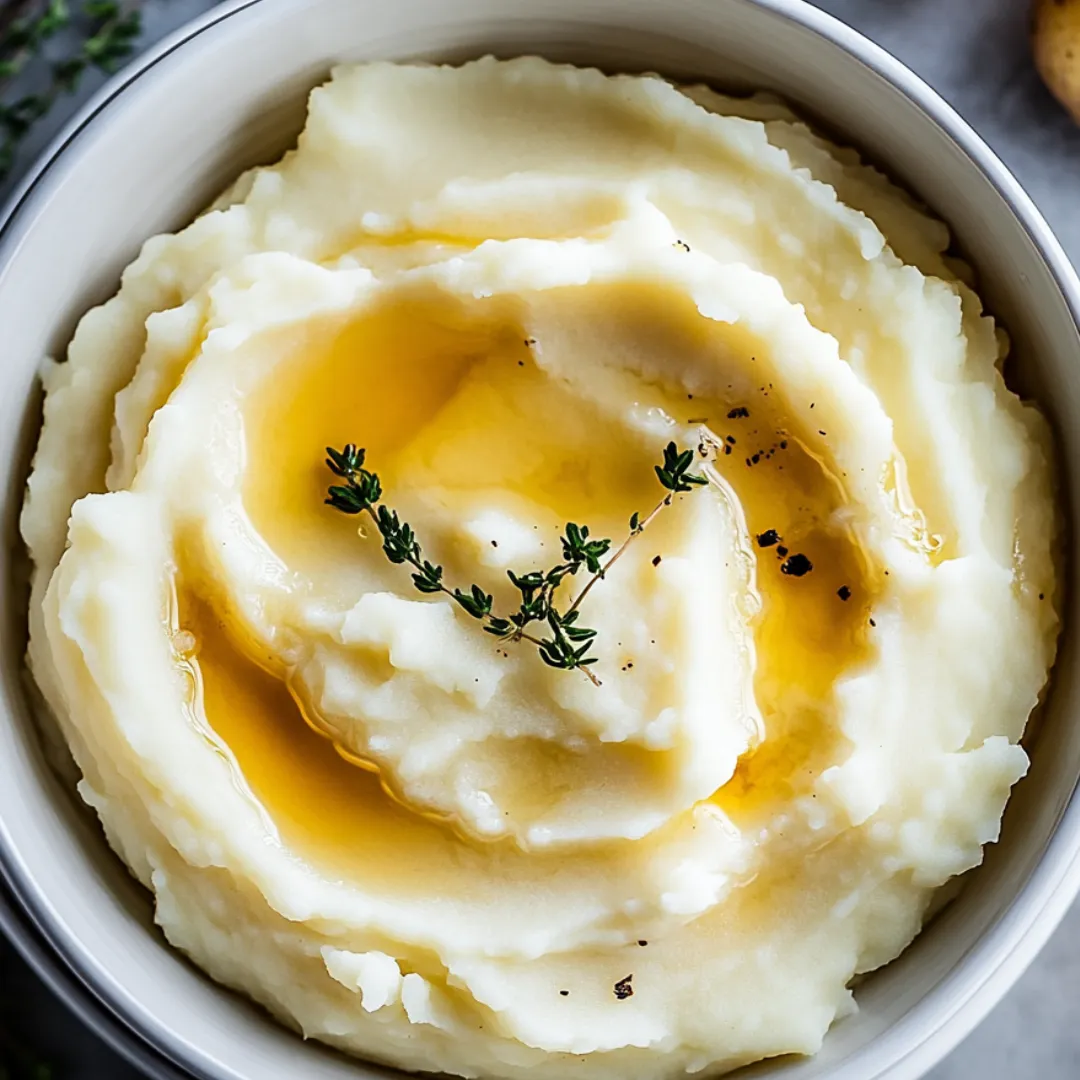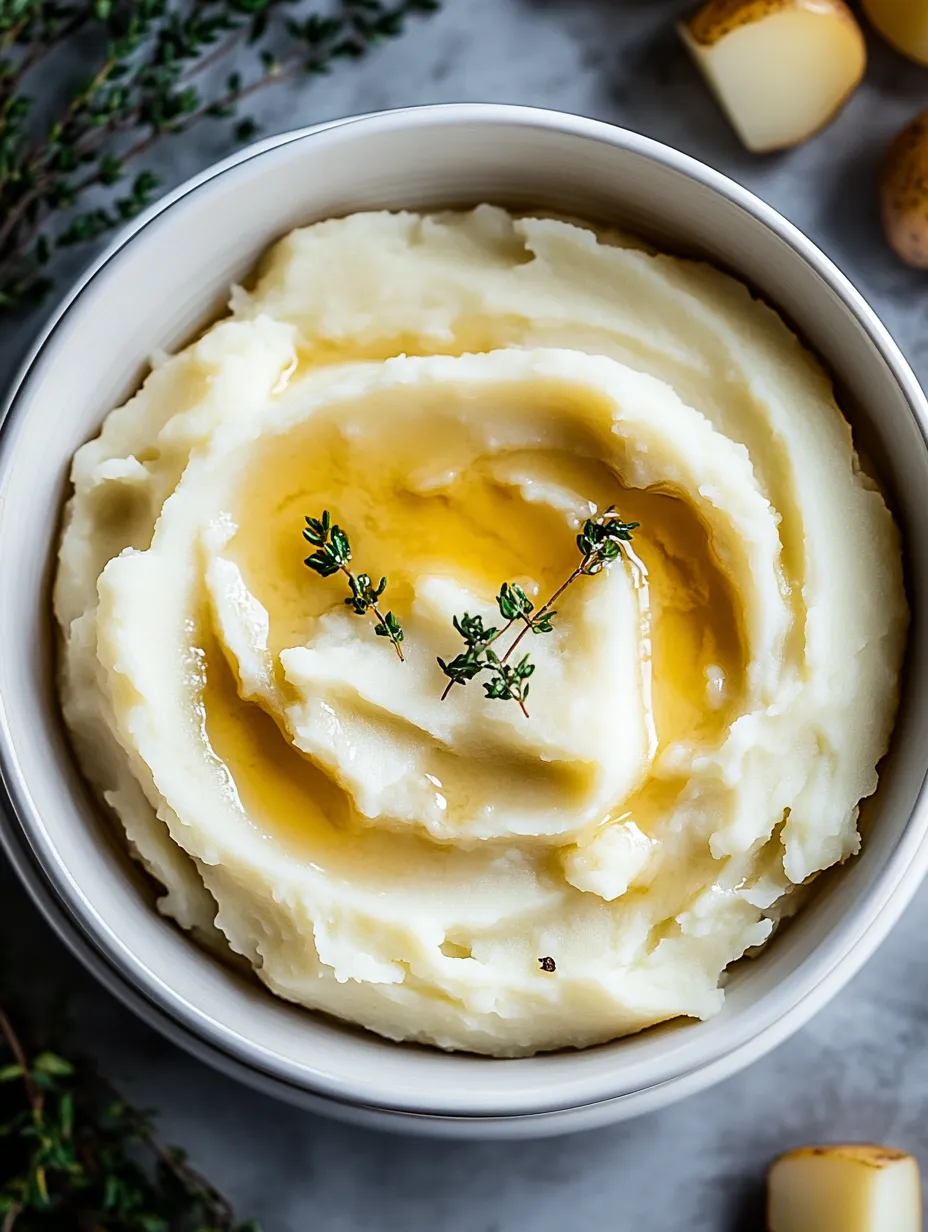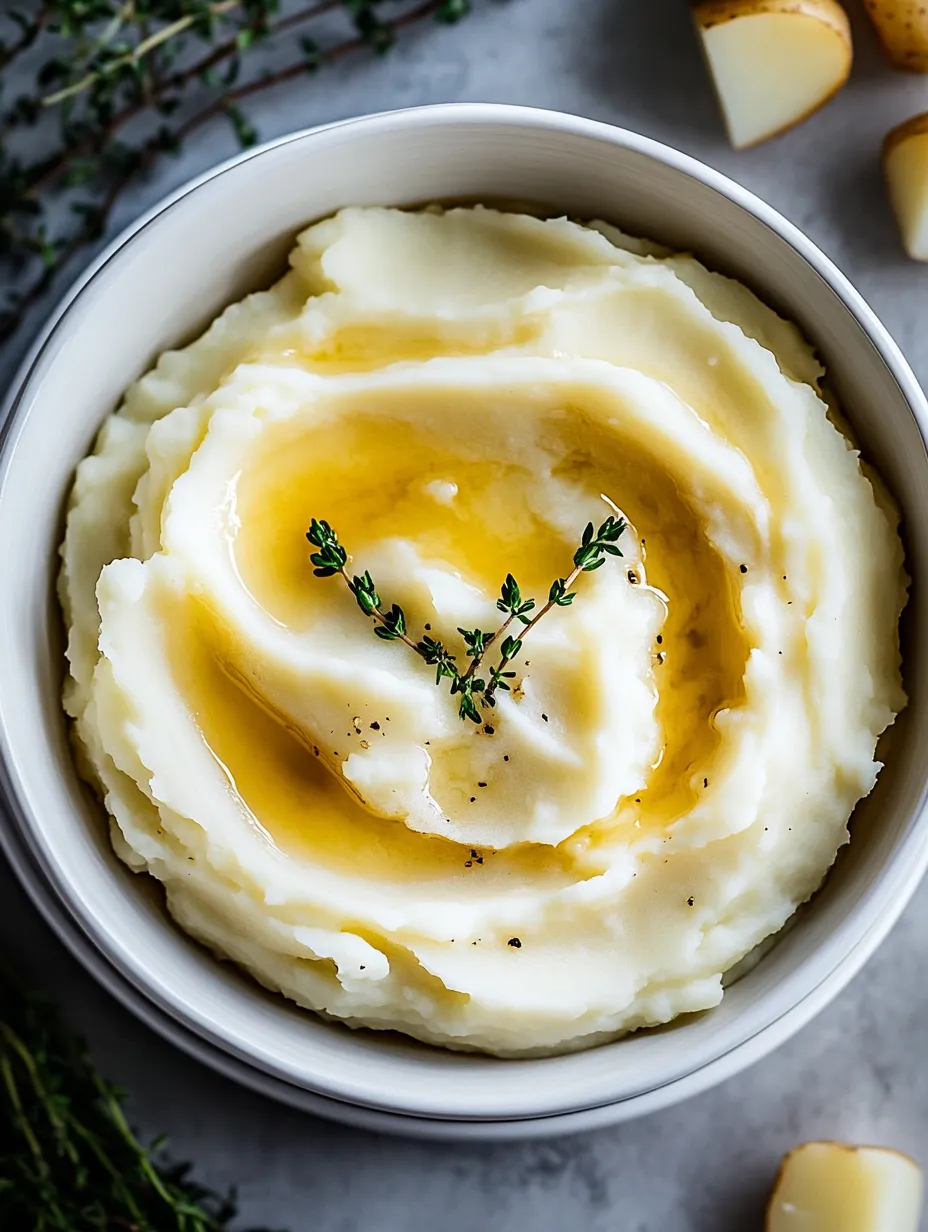 Pin it
Pin it
Creamy, smooth, and undeniably comforting, Gordon Ramsay's mashed potatoes elevate this humble dish to something truly special. This recipe strips away unnecessary complexity and focuses on perfect technique and quality ingredients. The result is a velvety side dish with rich buttery flavor that complements any meal from weeknight dinners to holiday feasts. With just a handful of ingredients and straightforward preparation, you'll create restaurant-quality mashed potatoes that will have everyone asking for seconds.
I was initially skeptical about another mashed potato recipe claiming to be 'perfect,' but after making these, I understand the hype. The first time I served these at a family dinner, my brother-in-law (who typically politely declines seconds) actually asked if he could take the leftovers home. The key difference I found was warming the milk before adding it—such a simple step that dramatically improves the final texture and prevents that slightly grainy consistency I'd struggled with before.
Essential Ingredients
- Potatoes: Yukon Gold potatoes create the ideal balance between fluffiness and creaminess. Look for firm potatoes without green spots or sprouts, roughly similar in size for even cooking.
- Butter: Use high-quality salted butter for the richest flavor. European-style butter with higher fat content will yield even more luxurious results with a deeper yellow hue.
- Milk or cream: Heavy cream produces the richest result, but whole milk works beautifully for everyday occasions. The fat content directly affects the final creaminess, so choose according to how indulgent you want the dish to be.
- Garlic: Optional but transformative. Choose firm, tight heads with no sprouting. The subtle garlic infusion adds complexity without overwhelming the potato flavor.
- Salt: Kosher or sea salt allows better flavor control than table salt. Proper seasoning is crucial—potatoes need more salt than you might expect to bring out their best.
- Black pepper: Freshly ground provides tiny bursts of spice that complement the richness. Pre-ground pepper won't deliver the same aromatic quality.
 Pin it
Pin it
Step-By-Step Preparation
- Select and prepare your potatoes properly:
- Choose potatoes of similar size for even cooking. Peel them thoroughly, removing any eyes or blemishes, then quarter them into roughly equal pieces, about 1.5-inch chunks. Immediately place them in cold water to prevent discoloration, which happens quickly with cut potatoes exposed to air.
- Start with cold, generously salted water:
- Place the quartered potatoes in a large pot and cover with cold water by at least one inch. Add approximately one tablespoon of salt to the water—this isn't just for flavor but actually changes the way the potatoes cook, allowing them to absorb the perfect amount of moisture. Starting with cold rather than boiling water ensures even cooking from the center to the exterior.
- Add garlic for subtle depth:
- If using garlic, add whole peeled cloves to cook alongside the potatoes. This infuses a gentle garlic essence without overpowering the potato flavor. The garlic becomes soft enough to mash seamlessly with the potatoes.
- Monitor cooking with vigilance:
- Bring the pot to a gentle boil over medium-high heat, then reduce to maintain a steady simmer. Check frequently by piercing with a fork—the potatoes should offer just slight resistance when pierced. Overcooking leads to waterlogged potatoes, while undercooking results in unpleasant lumps. Perfect doneness usually takes 15-20 minutes depending on your potato size.
- Drain thoroughly and dry slightly:
- Once fork-tender, drain the potatoes completely in a colander. For the best texture, return them to the hot, empty cooking pot for 1-2 minutes over low heat, gently stirring to evaporate excess moisture. This seemingly small step creates significantly better results by concentrating flavor and preventing wateriness.
- Warm your dairy ingredients properly:
- While the potatoes are cooking, gently warm your milk or cream in a small saucepan until steaming but not boiling. Cold dairy shocks the hot potatoes, causing them to seize and develop a less pleasant texture. The temperature difference matters enormously for the final consistency.
- Master the mashing technique:
- Begin with melted butter, incorporating it thoroughly before adding any milk. This coats the starch molecules first, creating a better texture. Add the warmed milk gradually in several additions, mashing between each pour until you reach your desired consistency. Use a traditional potato masher with an up-and-down motion rather than a circular stirring pattern, which can make potatoes gluey.
- Season thoughtfully:
- Add salt and freshly ground pepper incrementally, tasting as you go. Potatoes absorb salt readily, often requiring more than expected. A final taste test before serving is essential—the seasoning should be prominent enough to enhance but not mask the natural potato flavor.
I've always found the quality of butter makes a remarkable difference in this recipe. My grandmother insisted on using European-style butter with higher butterfat content, and after trying it both ways, I can taste why she was so particular. The richness and mouthfeel are noticeably improved, turning something everyday into something memorable. It's a small upgrade that makes a significant difference, especially when serving these potatoes for special occasions.
The Science Behind Perfect Mashed Potatoes
Understanding what happens inside a potato while cooking helps achieve perfection. Potatoes contain starch granules that swell and soften during cooking. When mashed, these granules release starch. The key is controlling this release—too much creates a gluey texture, too little leaves unwanted lumps. Starting potatoes in cold water allows them to heat gradually, cooking evenly from outside to center. This prevents a common problem where the exterior turns mushy while the interior remains undercooked. The salt in the cooking water doesn't just season but helps maintain the potato's cellular structure during cooking. The order of adding fats matters significantly. Butter first creates a protective coating around starch molecules before the liquid is introduced, preventing excessive starch release. This is why professional chefs are so particular about this sequence.
 Pin it
Pin it
Perfect Pairings
Ramsay's mashed potatoes complement nearly any main dish beautifully, but they truly shine alongside proteins with rich sauces or gravies. The velvety texture creates the perfect canvas for soaking up flavors while adding creamy contrast. For a classic pairing, serve alongside a perfectly seared steak with a red wine reduction. The richness of the potatoes balances the robust meat flavors, creating a harmonious plate that needs little else to satisfy. With poultry, these potatoes elevate a simple roast chicken to Sunday dinner status. Their buttery character enhances the subtle flavor of white meat while providing textural contrast to crispy skin. For vegetarian meals, these potatoes partner wonderfully with roasted mushrooms, which provide umami depth that complements the potatoes' richness. A drizzle of truffle oil over both components creates an especially luxurious combination.
My final thought on Ramsay's mashed potatoes is that they perfectly demonstrate how mastering fundamental techniques elevates simple ingredients to extraordinary results. These aren't fussy or complicated, yet they deliver restaurant-quality flavor through attention to detail. I've made countless variations over the years, but I always return to this method because it consistently produces that perfect balance of comfort and luxury. There's something deeply satisfying about transforming humble potatoes into something that makes dinner guests fall silent with appreciation after the first bite.
Frequently Asked Questions
- → Why should I start potatoes in cold water?
- Starting in cold water helps potatoes cook evenly from the inside out, preventing a mushy exterior and hard center.
- → Can I make these mashed potatoes ahead of time?
- Yes! Make them up to 2 days ahead and reheat with a splash of milk or cream in the microwave or on the stove.
- → What can I add to upgrade these mashed potatoes?
- Try adding grated cheese, sour cream, chives, roasted garlic, or crispy bacon bits for extra flavor.
- → Why are my mashed potatoes gluey?
- Over-mashing or using a food processor can make potatoes release too much starch, causing a gluey texture. Mash just until smooth.
- → Can I substitute the dairy ingredients?
- Yes, use olive oil instead of butter and plant-based milk for dairy-free mashed potatoes, though the flavor will be different.
